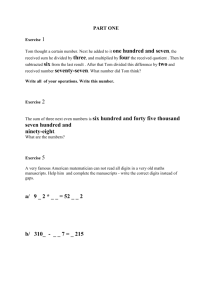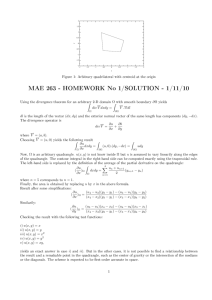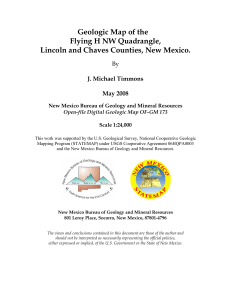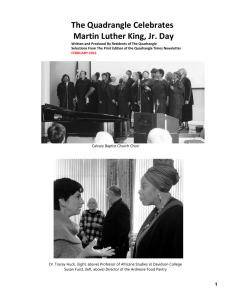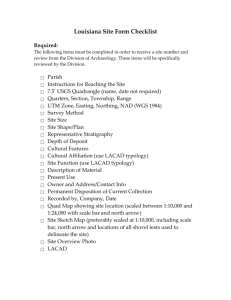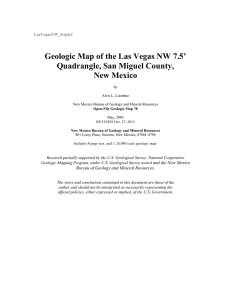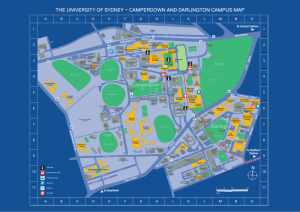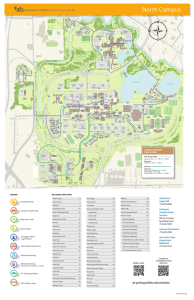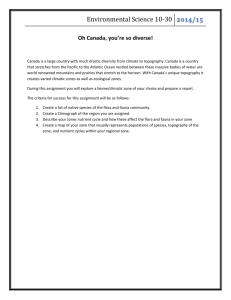3. Buckingham Quadrangle
advertisement
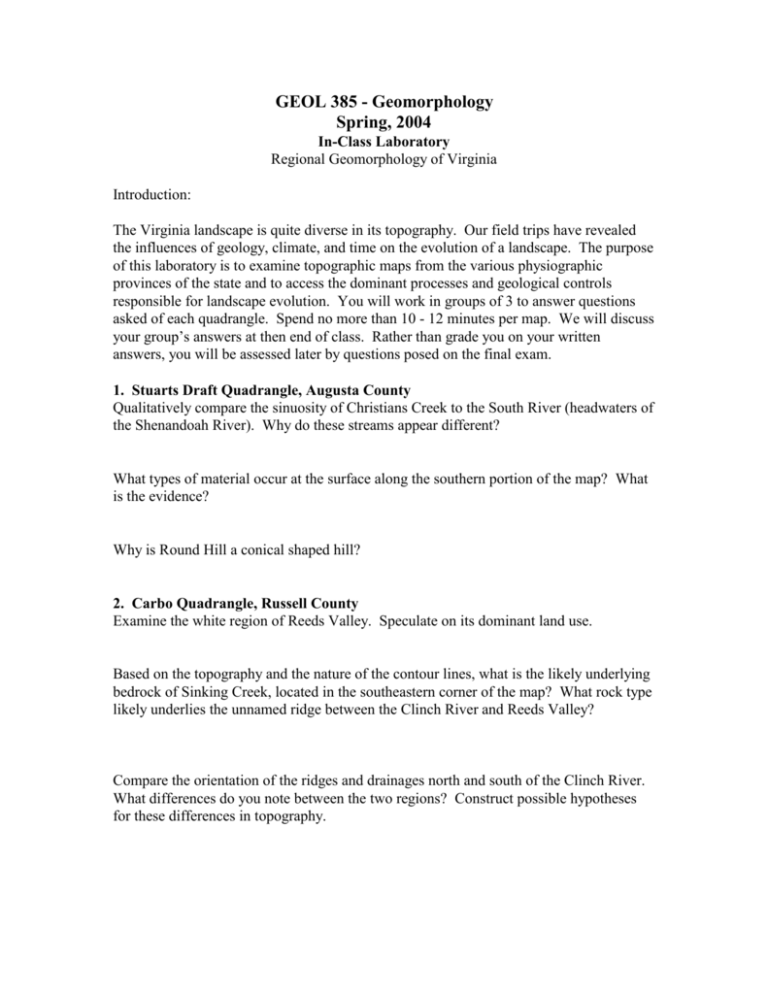
GEOL 385 - Geomorphology Spring, 2004 In-Class Laboratory Regional Geomorphology of Virginia Introduction: The Virginia landscape is quite diverse in its topography. Our field trips have revealed the influences of geology, climate, and time on the evolution of a landscape. The purpose of this laboratory is to examine topographic maps from the various physiographic provinces of the state and to access the dominant processes and geological controls responsible for landscape evolution. You will work in groups of 3 to answer questions asked of each quadrangle. Spend no more than 10 - 12 minutes per map. We will discuss your group’s answers at then end of class. Rather than grade you on your written answers, you will be assessed later by questions posed on the final exam. 1. Stuarts Draft Quadrangle, Augusta County Qualitatively compare the sinuosity of Christians Creek to the South River (headwaters of the Shenandoah River). Why do these streams appear different? What types of material occur at the surface along the southern portion of the map? What is the evidence? Why is Round Hill a conical shaped hill? 2. Carbo Quadrangle, Russell County Examine the white region of Reeds Valley. Speculate on its dominant land use. Based on the topography and the nature of the contour lines, what is the likely underlying bedrock of Sinking Creek, located in the southeastern corner of the map? What rock type likely underlies the unnamed ridge between the Clinch River and Reeds Valley? Compare the orientation of the ridges and drainages north and south of the Clinch River. What differences do you note between the two regions? Construct possible hypotheses for these differences in topography. 3. Buckingham Quadrangle Note the concentration of cleared land in the northwestern corner of this quadrangle (north of Mt. Vinco). Propose a hypothesis that explains this pattern of land use. 4. Toms Brook, Shenandoah County What rock type likely underlies Three Top Mountain? Both Three Top Mountain and Green Mountain are of the same geologic formation. The stream bisecting the two ridges cuts through a younger geologic unit. What rock type likely underlies the stream? What is the name of this geologic structure that comprises this landform? Compare the drainage pattern of the North Fork of the Shenandoah to other streams northwest and southeast of the area. Offer explanations for the stream’s morphology and drainage pattern. 5. Big Meadows Quadrangle, Madison and Paige Counties Examine the topography and relative steepness of the slopes of: The NW side of Skyline Drive (shown in red) The SE side of Skyline Drive Why do you think these slopes are different? 6. Rapidan Quadrangle, Madison, Culpeper, and Orange Counties Describe the topography: a. north of the Rapidan River b. south of the Rapidan River Comment on why the differences in relief between the northern and southern areas. Propose reasons for the existence of Buzzard Mountain 7. Quinby Inlet Explain the process that formed Chimney Pole Marsh 8. Grottoes Quadrangle What region of the map would you locate a well to maximize water quantity and quality? 9. Bluefield 1 x 2 degree Raised Relief Map How many physiographic regions can you discern on this map (Coastal Plain, Blue Ridge/Piedmont, Valley and Ridge, App. Plateau) Why does the terrain in the northwest section of the map “look different” from the southeastern quadrant? Observe the oval-shaped landform centered around Burkes Garden (SW corner of map) Explain its occurrence What rock type is most likely in its center? 10. Framed Regional Raised Relief Map The Blue Ridge Mountains widen significantly south of Interstate 64 near Waynesboro. What are some possible causes of this phenomenon? Why does the northeastern end of Massanutten have a large valley between its two ridges? 11. Chincoteague East Quadrangle Indicate the geographical direction of the long-term longshore drift. Speculate on the origin of Chincoteague Island.
